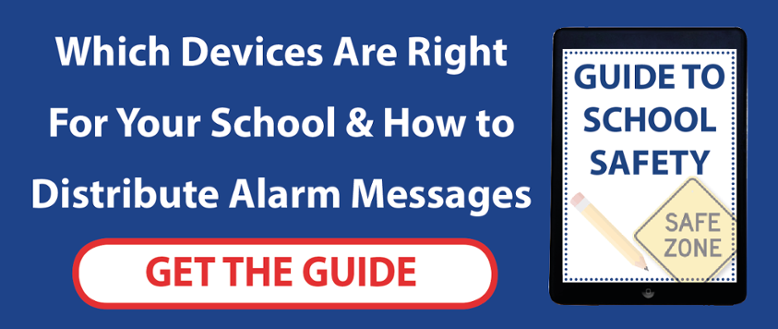
Managing school safety is a complex and oftentimes daunting task. With violence in schools on the rise in the UK, implementing the right safety plan can be difficult. Protecting both staff and students from violence is unfortunately becoming a major part of health and safety plans in many UK schools. Threats of violence against teachers from students is increasing, a 2016 report from the ATL Teachers Union found that four out of ten teachers had experienced physical violence. Of those surveyed, nine out of ten teachers had been subjected to swearing or shouting from students. In addition to this, in 2017, three school children were arrested following acid attacks against three other pupils in a school in East London. The threat of physical violence in schools against both staff and students are frightening and very real, meaning school safety is in need of effective management more than ever before.
Challenges Faced by Teachers
Teachers are among the most vulnerable lone workers, often being hugely outnumbered by their students. Many teachers are responsible for large groups of pupils and have a responsibility to take into account their own safety and the safety of the students that they teach. Control over such large groups is very limited, particularly in schools that have problems with the behaviour of pupils. Many school children lack respect for teachers and this puts teachers in a very vulnerable position. Although teaching is a very noble profession, being a teacher in today's society can be a dangerous career choice. Teachers hold a high level of responsibility and must be prepared to react correctly in a crisis. Due to the unpredictability of students in educational environments, teachers must be prepared to deal with fights between students, violence or threatening behaviour against them/ other staff members, and possible incidents caused by intruders. These are just a few of the challenges that teachers face in schools and knowing how to minimise or defuse these incidents is essential.
Communication Is Key
Most teachers are confined to one room when teaching a class, and sometimes may not have easy access to an exit. In this environment, some teachers may feel that they are at the mercy of the class that they teach. Making sure teachers feel as comfortable as possible in their position is not only important in regards to their safety, but may also have an impact on their ability to teach effectively. If a teacher feels vulnerable, it is likely to affect their performance in the classroom. Communication is a key factor in preventing incidents in the classroom, and often teachers lack contact with other staff members during teaching hours. Providing teachers with a means of contact in the event of an emergency or incident is a necessity, usually in the form of a staff safety device. These devices can be incredibly useful to teachers as they can be used discreetly to trigger SOS alerts that call for immediate back-up from other staff members or authorities. Making sure teachers carry a safety device can be the difference between life and death in extreme cases. With the number of violent incidents that have been recorded in schools in recent years, it's not worth taking chances.
What Should Schools Be Doing to Minimise Risks?
Although risks of incidents occurring are high in educational environments, there are steps that can be taken to minimise them, and prepare for worst case scenarios. As mentioned above, communication is incredibly important for those working in dangerous environments, and this doesn't only mean in the form of communication devices. All members of staff in a school should be able to communicate effectively in regards to health and safety protocol. Therefore, it is a good idea to hold regular meetings and discussions to ensure that all staff members are on the same page when it comes to effective health and safety management. Risk assessments should be regularly scheduled, with new issues being addressed as they arise. Schools are ever-changing environments, meaning that what may not have been a threat one week, could be a major threat the next week. This means, assessing risks regularly and ensuring all staff are up to date with current risks (and ways in which to react to them) is of paramount importance.
Defending Against Intruders
Schools should review their policies frequently to incorporate any new threats against staff or students. Intruders in schools can be a major threat, therefore having policies in place that take this into consideration is a good idea. For example, secure entrances into the premises and requiring staff or students to wear lanyards/ identification can be a good solution. Staff should be aware of what to do if they come into contact with an intruder, so training staff in preparation for this is suggested. Early warning in these situations are key. Alerting colleagues to the immediate danger is paramount to ensuring the safety of everyone within the school. Therefore, a safety device can be useful in these situations as staff are able to discreetly trigger an alert and communicate the situation to colleagues who can then contact emergency services and implement their school lockdown procedure. A discreet device can also be very useful if a staff member encounters a fight outside of the school grounds and needs to call for back-up, or the emergency services.
Further Information
In addition to lone worker safety devices, implementing policies, and assessing risks regularly, there are a number of useful resources relating to school safety. The Classroom Checklist is a convenient guide for health and safety managers, to help in the effective planning of safety procedures.





